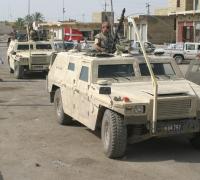West-African counterterrorism force is unlikely to be a game changer in the Sahel
Financing seems to be the most powerful argument for the US to resist the proposal made by France to authorize the deployment of the G5 Sahel Joint Force by the UN Security Council.
The G5 Sahel Joint Force would consist of contingents from Burkina Faso, Chad, Mali, Mauritania and Niger. A Security Council Resolution would authorize the new mission “to use all possible means” to combat terrorism, organized crime and illegal migration in the Sahel region, an arid arc that sweeps across Africa from Sudan to Cape Verde.
In a recent blog post, DIIS researcher Signe Marie Cold-Ravnkilde argues why the G5 Joint Force is unlikely to be a game changer in the fight against the persistent security challenges in the region.
The force would deploy alongside the French anti-terror operation, Barkhane, which consists of 4,000 soldiers based throughout the five countries. The G5 force would also work with Minusma, which has about 12,000 troops in Mali.
Minusma has become the UN’s most deadly mission, suffering more than 120 deaths in its four years of deployment. The mission is a continuing target of armed groups fighting against the Malian state, despite the three major external security players operating in the region — the UN, the European Union and France — aiming to support the country.
The G5 Sahel quest for a more direct counterterror mandate and enhanced border control represents a genuine attempt to respond to growing insecurity in the region. To what extent deploying the G5 Joint Force will ensure long-term stabilization, however, is still doubtful.
DIIS Experts


